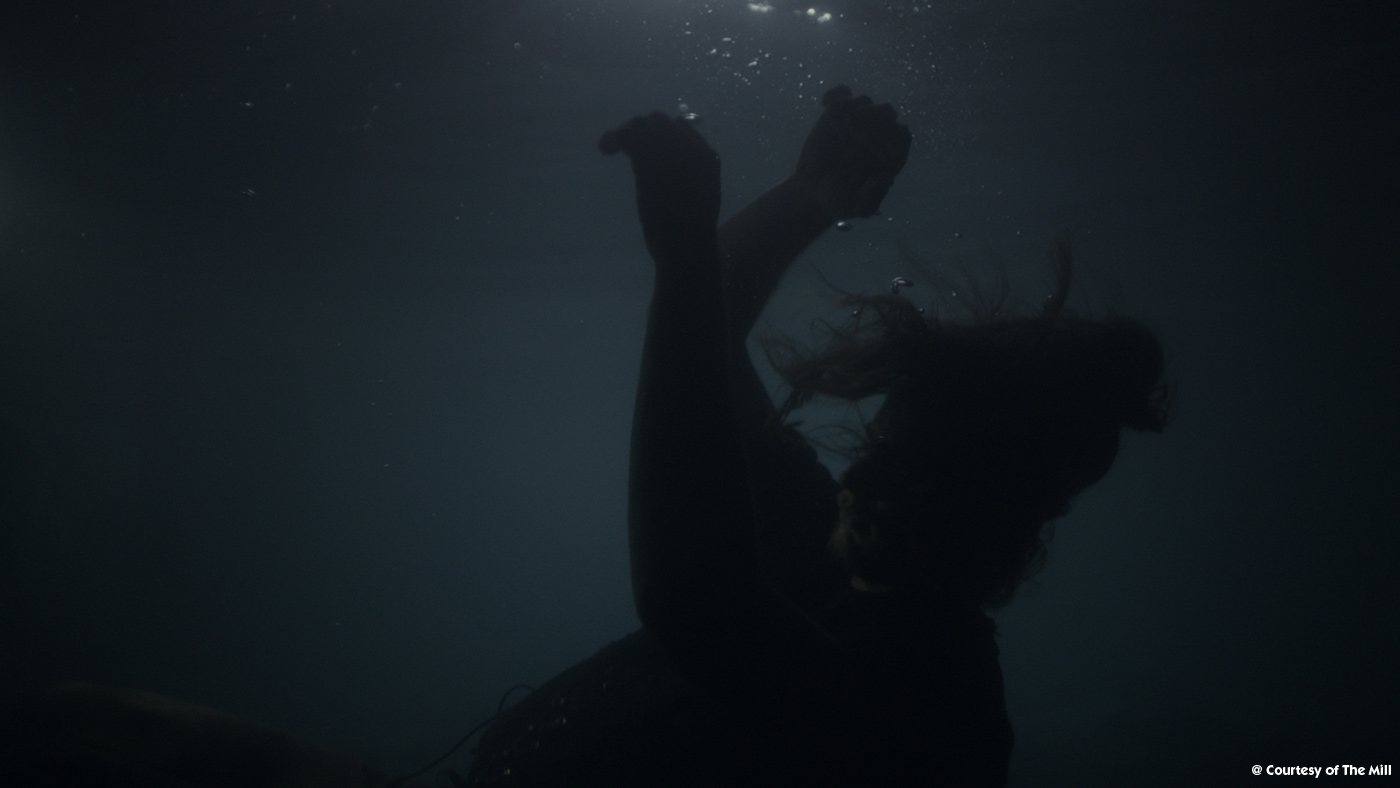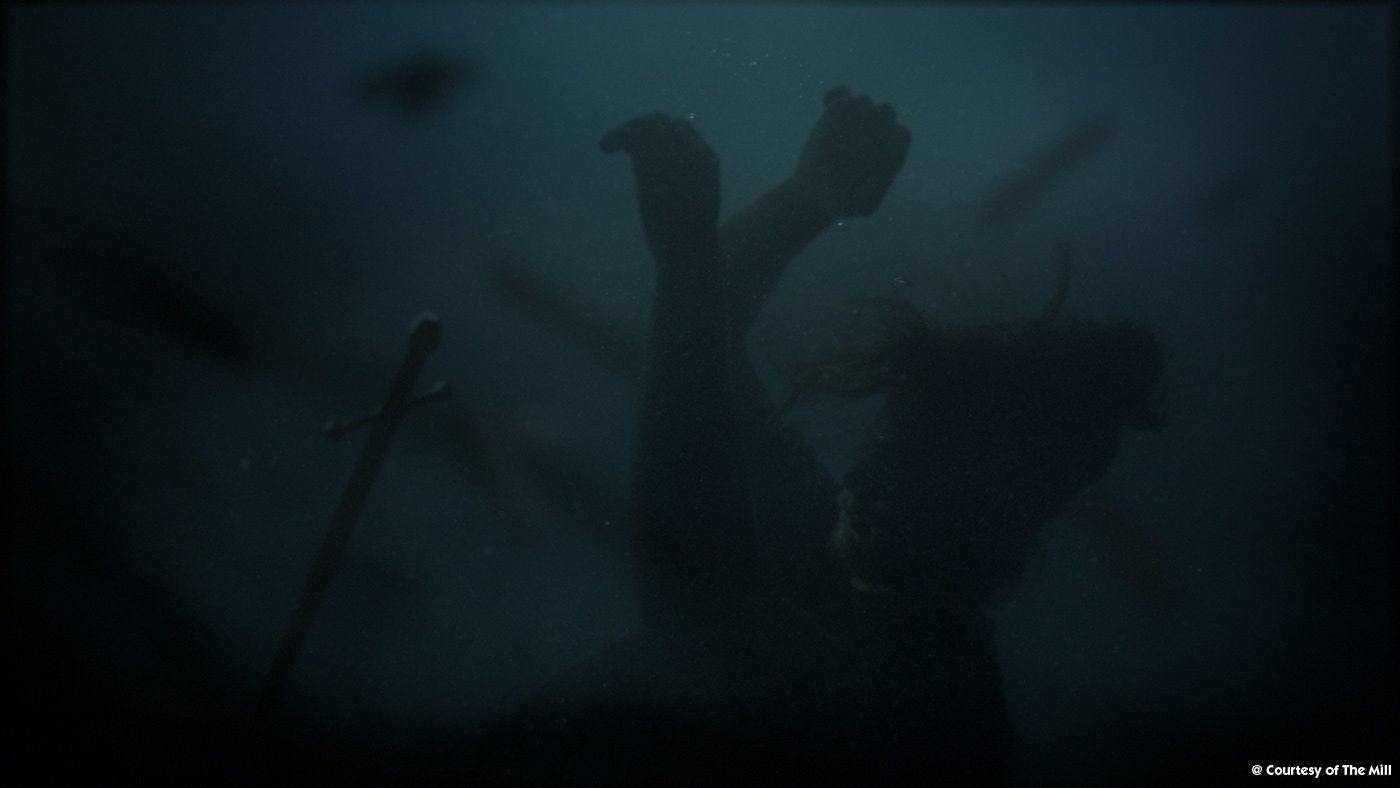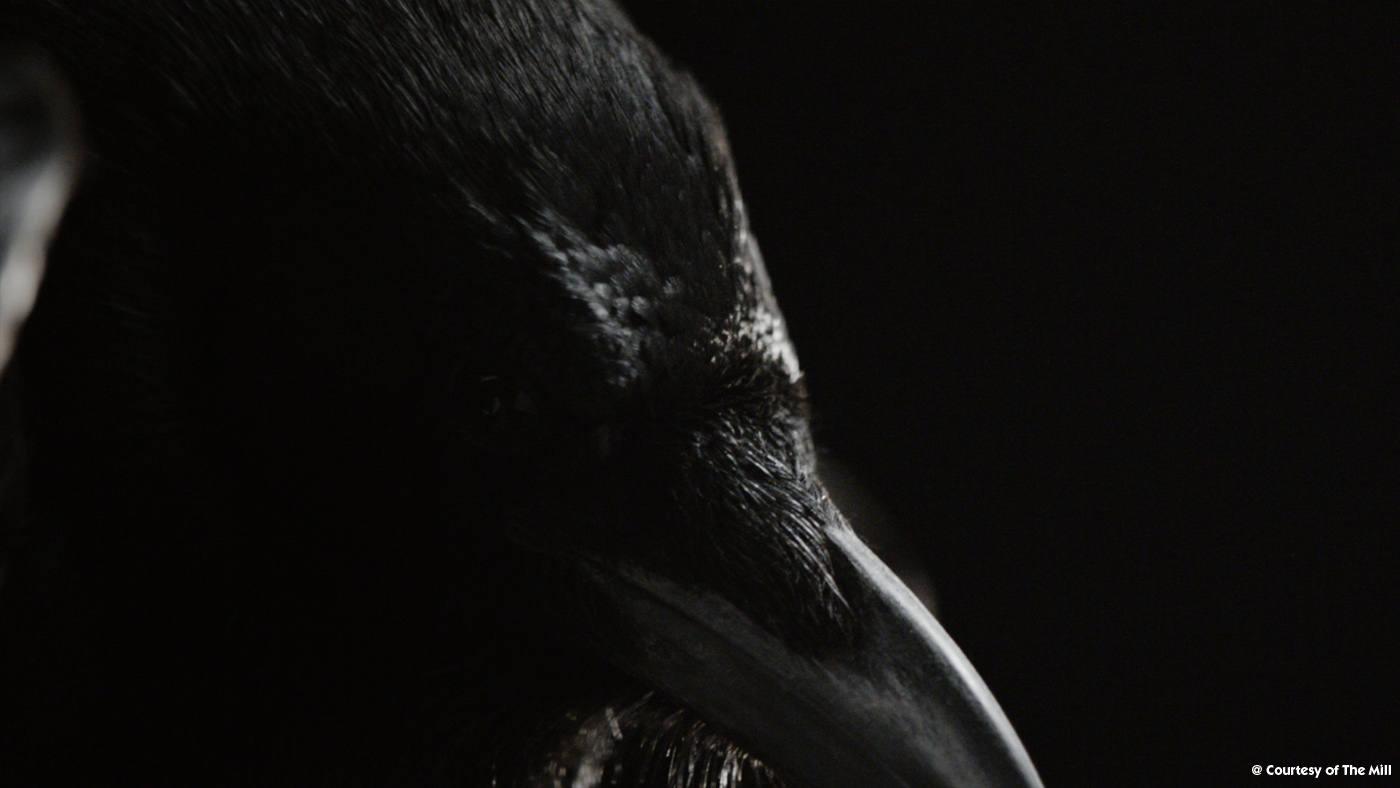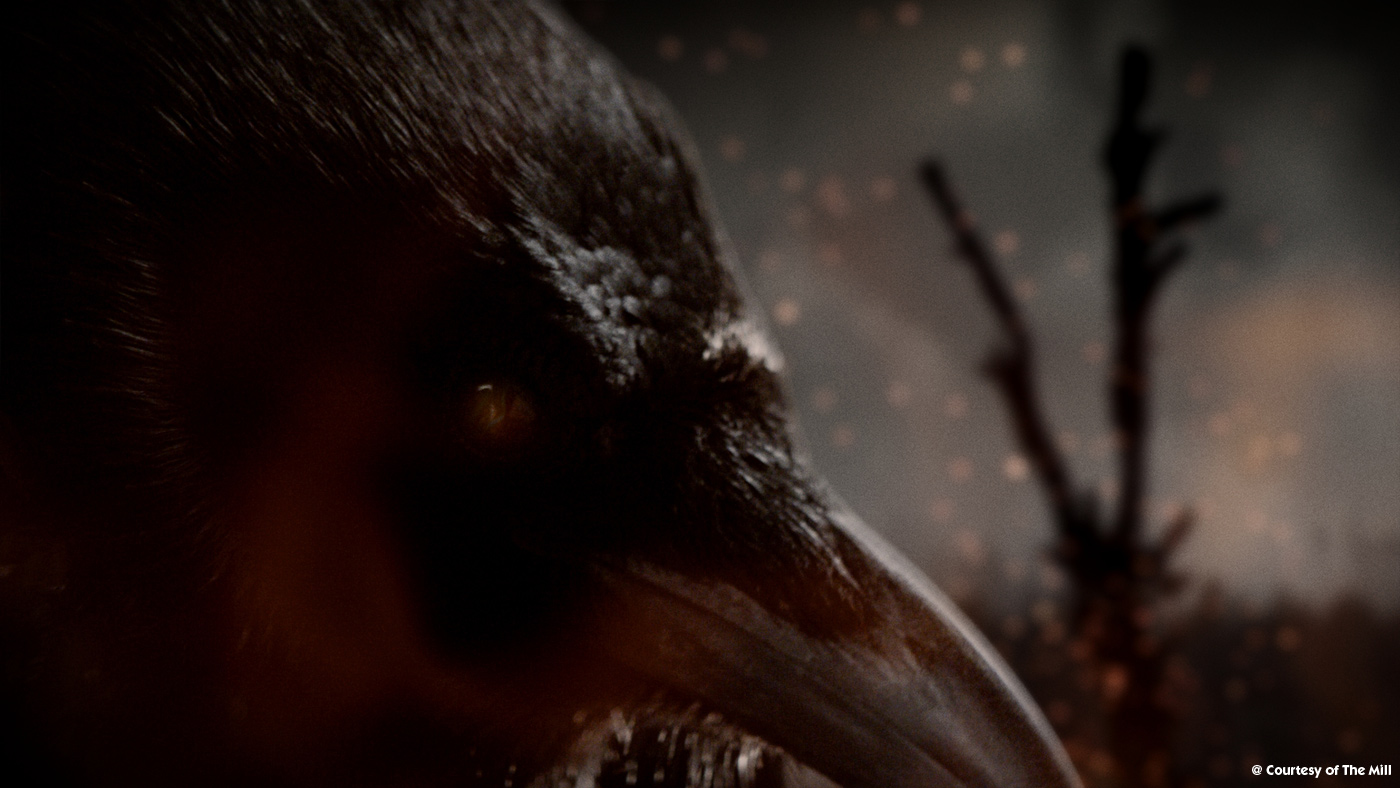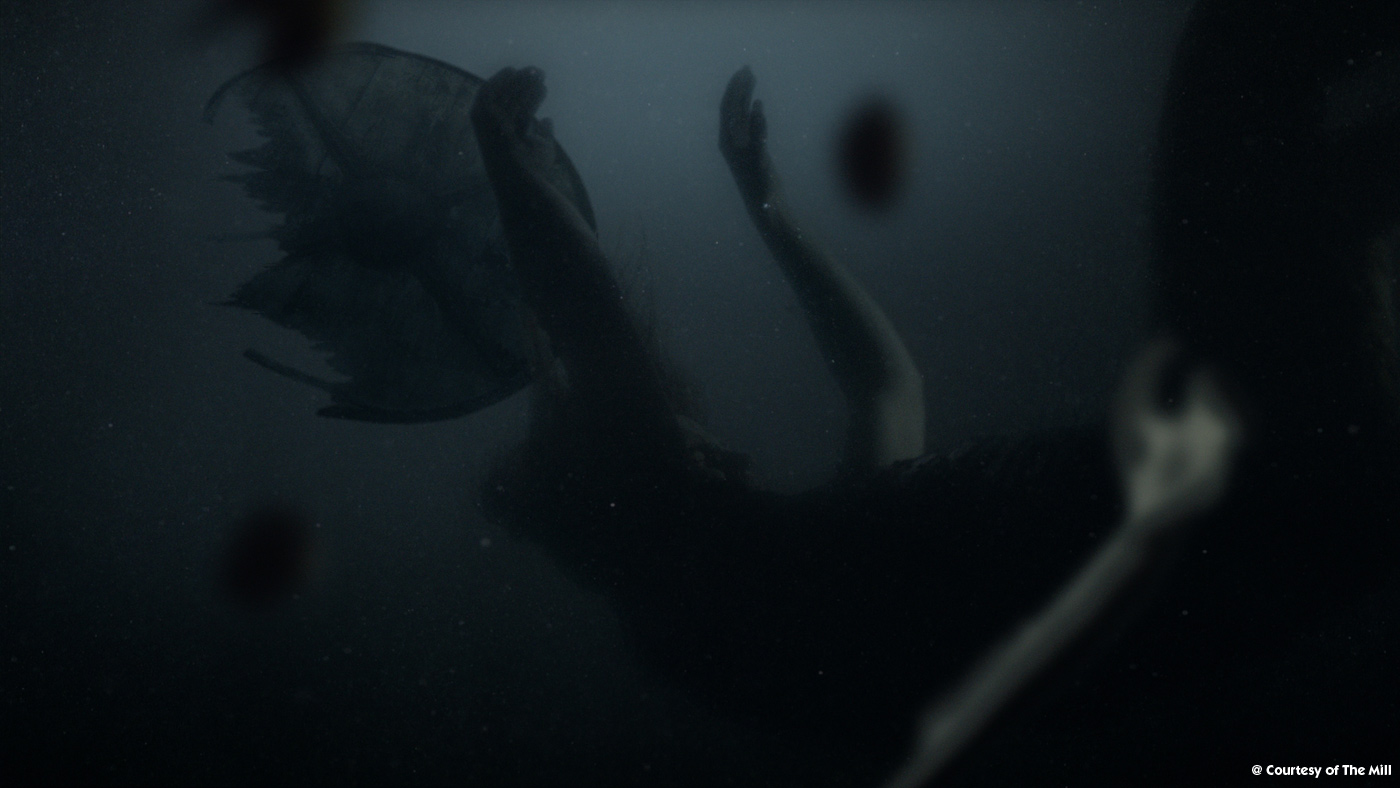Westley Sarokin worked for 5 years as an Flame artist at a52. In 2005, he joined The Mill as Joint Head of 2D. In the following interview, he explains his work for the VFX supervision of the VIKINGS main title. He is, for it, accompanied by Danny Morris, Lead Flame Artist.
What is your background?
I studied film and computer science at university and when I got my first job in the VFX industry I started out as a 3D artist, did that for a number of years, then transitioned into compositing. Currently I’m joint head of the compositing department at The Mill New York.
Danny Morris – Lead Flame Artist // I studied mechanical engineering in Dublin. In 2002 I joined the Mill in London and trained to be a VFX artist. I am currently working in the NY office.
How did The Mill got involved on this show?
Rama Allen is content director with Mill+ so when he pitched on doing the VIKINGS titles for History Channel, we got involved very early on to help realize his vision from an aesthetic and visual effects standpoint.
How was the collaboration with director Rama Allen?
The collaboration was one that started very early on in the project. The idea evolved over time and we tried to be there every step of the way to figure out how to create the imagery Rama was conceptualizing and to suggest ways we could enhance it. Rama is great to collaborate with in
that he is always looking for the best idea wherever it may come from. If it makes the visual stronger and the concept more powerful, that’s the direction he wants to go.
What indications and references did you received from Rama Allen?
There were a ton of references pulled for this project. When the core idea started to get fleshed out, we looked at a lot of different types of underwater footage, fire elements, clouds, landscapes. Imagery that felt brutal, powerful, and fatalistic.
How did you approach this main title?
From the beginning there was a strong idea as to what the narrative of the title sequence was going to be, but you never know how the footage is going to represent that until after the shoot. Fortunately we all had some previous experience shooting underwater and compositing those types
of elements together, so we had a rough idea what it was going to take to do the visual effects.
Can you explain to us one of your typical day on the shooting?
We had three shoots for this project. One was at an outdoor swimming pool that we lined with black duvetyne and shot at night with a few lights in the water. It was very tricky to get the feeling of falloff and depth in the environment we were shooting in but we helped that a lot in the composites. The drowning viking and the ocean goddess were shot on one night, then we shot a number of objects falling through water: shield, axe, coin, net, jewelry, and lots of stuff that didn’t make it into the final piece. We also did a tank shoot at The Mill where we picked up shots of a few elements we thought would be useful.
Can you tell us more about your work on the crow?
The crow was a lot of fun to work on. Rama had very clearly articulated and described the elemental palate that he wanted us to draw from: water, fire, smoke, light in darkness; so when it came to the crow and we had all these water shots in the cut, we knew we wanted to join the crow with fire elements. There are a lot of subtle but interesting details in the crow shots. We wanted it to feel like this was a symbol of death on a burning field of battle.
How did you create the bubbles?
The bubbles were almost all practical elements shot either as part of the final image or as a separate element which we composited in later. We also did a good amount of bubble removal for when the drowned viking was deep below the surface of the water.
Many weapons and elements are going down in the underwater shots. How did you create and animate these elements?
There are quite a few elements falling through the water over the course of the title sequence. We had practical props that we dropped into either the swimming pool we shot the talent in, or a tank we had at The Mill. We shot everything at a high frame rate so that they had a sense of weight and slow motion so that they matched with the slow movement of the talent in the shot. Where we didn’t have an element we wanted we created a 3D object for it in Maya or Flame.
Can you explain to us in details the creation of the beautiful underwater shots with the three boats seen from below?
This was a really involved shot and we went through dozens of iterations before we came to what’s in the piece. All the objects in the scene were created in 3d or in Flame and we used live action elements to add touches of realism where we felt it helped. It was challenging in that we wanted it to look real but it also needed to accomplish the dramatic reveal of the battle that’s happened on the surface of the water and that the viking we’ve just followed to his death is one of many who has died. We wanted to create an atmosphere that felt like you were in the midst of the aftermath of a battle on the ocean and were falling into the depths. It’s the first time in the piece you look up and see what’s happening overhead and is the culmination of the story..
Can you tell us more about the creation of the lightning?
The lightening was derived from actual plates of lightening we’d shot on another occasion. We comped them into the various scenes to make them feel ominous and representative of the coming storm which is revealed at then end of the piece.
For the end shot the thunder lightning is used to reveal the viking boats attacking the shore. The lightning was painted into the sky and reveals the viking boats and fire as it flashes.
How did you create the final shot with the ocean?
The final shot with the ocean was a huge challenge and we’re incredibly proud of the results. This was Danny Morris’ shot and he did an amazing job putting it together. It was a combination of stock elements of an ocean, cloud, lightning, and fire plates, cg renders of boats, atmosphere, a beautiful render of the VIKINGS logo; and then putting it all together with plain old artistry and some very tricky compositing. This shot was the icing on the cake so we knew it had to look amazing,
dark, and beautifully brutal.
Danny Morris – Lead Flame Artist // This end shot was a huge composite. We had stock footage of an ocean. Working closely with Rama we selected a wave that would reveal the vikings invading a new land. A shoreline and stormy sky was then composited with the ocean. Viking ships are composited near the shore to show a viking invasion. There is fire composited to to show the sense of destruction the vikings have inflicted on this land.
In order to show this the lightning/thunder flashes are used to reveal the viking boats and destruction on the shoreline. This was achieved by painting in the thunder flashes light interaction with the scene. The viking logo and title is then revealed through the stormy sky.
What was the biggest challenge on this project and how did you achieve it?
There were a number of tricky aspects to this project one of which was integrating all the underwater elements together in the various shots. We’d done a number of tank and pool shoots to get the main character and various objects falling through water, and it was a real challenge to
find the right composition of elements, get them to feel like they were in the same lighting environment, depth and scale; and then of course create a compelling and beautiful image.
Thankfully for the bulk of the piece we had a number of great elements we had shot underwater but for the final two scenes of the piece where the boats are seen from below and then the end title card, those were created entirely in CG or from stock elements which we sourced and composited to create the finished shots.
What do you keep from this experience?
This project gave me a much deeper understanding of what the Viking culture was about and the social, religious, and symbolic constructs that were important to them. I also learned that the deeper the pool the easier your water shoot will go.
How long have you worked on this film?
We worked on this for about 3 weeks.
How many shots have you done?
There were 41 shots on this project.
What was the size of your team?
We had a relatively small but very talented team of people. 3 Compositors and 2 CG artists.
What is your next project?
Just finished Spotify’s first commercial.
What are the four movies that give you the passion for cinema?
Four favorite movies when I was 8: TRON, DARK CRYSTAL, STAR WARS and BUCKAROO BANZAI.
A big thanks for your time.
// WANT TO KNOW MORE?
– The Mill: Dedicated page about VIKINGS on The Mill website.
// VIKINGS – MAIN TITLE – THE MILL
// CREDITS
// AGENCY
Agency: Take 5
Writer/Executive Producer: Michael Hirst
Executive Producer: Morgan O’Sullivan
Executive Producer: Sheila Hockin
Co-Producer: Bill Goddard
Director: Johan Renck
// PRODUCTION
Production Company: The Mill
Director: Rama Allen
Art Director: Audrey Davis
Head of Design Production: Danielle Amaral
Head of Content: Ian Bearce
Line Producer: Rich Schwab
Production Manager: Jon Simonetta
Director of Photography: Khalid Mohtaseb
Second Unit DP: Adam Carboni
DIT: Nick Midwig
Stylist: Linette Delmonico
EFX Makeup: Jacqueline Valenca
Prop: Joseph Paul Sciacca
Camera PA: Dan Stewart
PA: Chuck Simmons
Talent: Shannon Rusbuldt
Talent: Bruce Raubenheimer
// EDITORIAL
Editing Company: The Mill
Editor: Ryan McKenna
Edit Assist: Jessica Ledoux
// POST-PRODUCTION / VFX
Post-Production / VFX Company: The Mill
Mill Office: New York
VFX Supervisor: Westley Sarokin
2D Lead Artists: Westley Sarokin, Danny Morris
3D Lead Artists: Sandor Toledo, Vince Baertsoen
2D Artists: Suzanne Dyer, Robert Bruce(Nuke)
3D Artists: Rubem Vanderbroek, Olivier Varteressian
Colourist: Damien Van Der Cruyssen
© Vincent Frei – The Art of VFX – 2013


